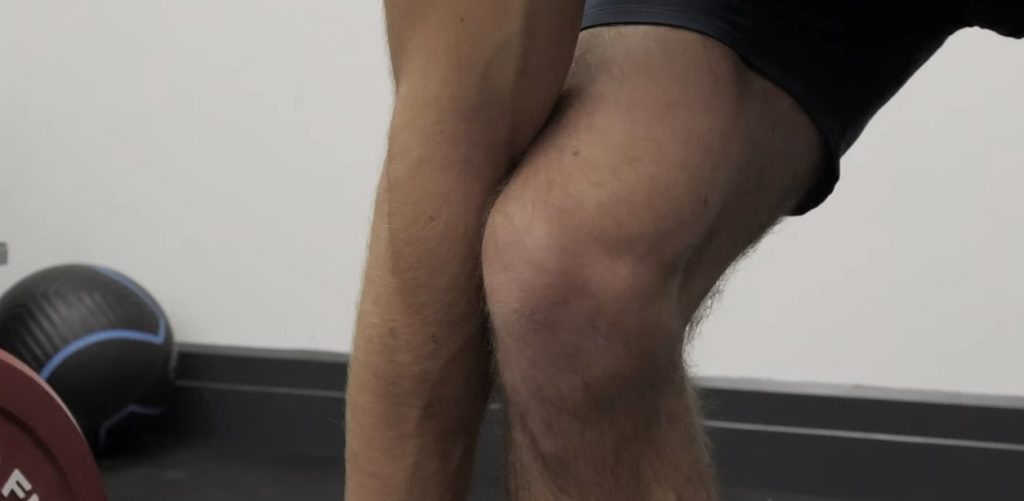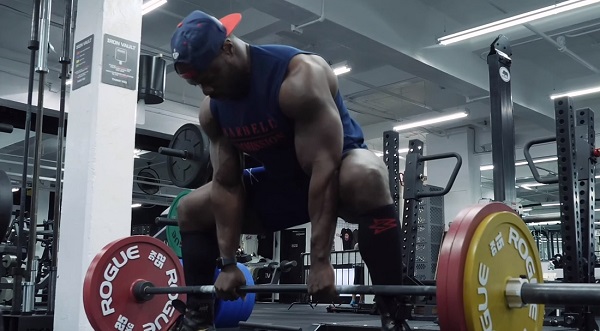Deadlift grip width can be a huge determinant of success when working with maximal loads.
Sometimes what seems like a grip strength issue is actually more related to how one is gripping the bar and the width in which they’re doing so. That’s why it’s important to perform assessments every once in a while to assess grip width mechanics, and this is especially true for beginner populations who are just starting to fine-tune their deadlift.
There’s no one-size-fits-all equation for grip width, however, there are some useful guidelines to keep in mind when trying to find what’s best for you. Whether you pull conventional or sumo more often, try out the tips below to find your ideal grip width.

Grip Widths Will Vary
Before reading any further, it’s important to acknowledge that all deadlift grip widths will vary slightly. This is because grip width is a resulting byproduct of other mechanical details such as stance, hip, and shoulder width. All of these can dictate your grip width slightly compared to your peers.
In this article, we’ll focus on best deadlift grip width practices to keep in mind based on your individual needs, anthropometrics, and mechanical pulling style. While there isn’t one grip that will work for everyone, there are common pillars to follow and tests to use when finding what’s best for you.
Conventional Deadlift
Grip Width
The best way to think about the arms and hands in the conventional deadlift is to visualize the arms as ropes and the hands as hooks. There are two useful tests I like to use to check grip width.
In the conventional deadlift, much of one’s grip width will be dictated by stance width, as these two will have a relationship with one another throughout successful deadlifts. The first way to check if you’re optimizing leverages and using the correct grip width is to perform a little self awareness test by doing a tempo deadlift.
Tempo Deadlift Grip Width Test
- Bend down and set as if you’re about to deadlift.
- Focus on where the arms are in relationship to the legs.
- Initiate a deadlift with a slow 3-second tempo concentric, then 3-second eccentric.
- Take note of how the arms and lateral legs interact.
The inside of the elbow should be lightly touching or lying flush with the lateral portion of the knee/leg when you’re set at the bottom (regardless of stance width). Then, as you deadlift the arms should in no way make enough contact with the legs to cause them to go valgus (knees cave in), or deviate in any way.
If the arms are causing the legs to shift in due to knocking into them, then widen the grip slightly to a point in which you can create light contact with the inside of the elbow and lateral leg in a set position, OR bring in your stance width slightly. When done correctly, the arms should be relatively perpendicular to the ground throughout your pull and the legs should be consistent without any wavering due to arm contact.
Another useful and easy test to check your deadlift grip width is to perform deadlifts with a pause at the top and bottom position of your pull.
Hand Angle Test
- Perform a 2-second pause when set.
- Initiate a smooth deadlift.
- Perform a 2-second pause at the top.
- Repeat.
Why add the pause? Well, at the bottom of a pull when set, we can sometimes ignore blatant grip red flags due to being so focused on the lift itself, and at the top, if we’re not self-assessing our grip sometimes, then we can ignore signs of needing to tighten it up. I compare this to dive bombing squats. Sure, it works for a while, but do you really have control of the weight?
What you’re looking for is palm contact around the bar and wrist angle. If there’s any point of the hand on the lateral side that is coming off the bar in either of these paused positions, then that could be a sign to reassess your grip width.
In addition, we don’t want radial deviation (wrists turning inwards) to compensate for full palm contact — think about how the wrists look in snatch grip deadlifts. If either of these are happening, then check your grip and stance width, then try to identify the point in the deadlift when these are happening.
Sumo Deadlift
Grip Width
Unlike the conventional deadlift, the sumo deadlift is a bit more nuanced with grip widths that will work for various athletes.
Why is this? Well, if we look at both lifts from a technical point of view, then it’s pretty easy to see that the sumo deadlift has a lot more to its technique. Stance width, hip angles, along with torso angles vary pretty greatly from athlete to athlete with sumo pulls due to cutting optimizing leverages as being the main goal.
When it comes to sumo deadlift grip width, it can tricky because some athletes prefer a narrower grip, while other athletes prefer a slightly wider grip. Before we talk about our grip width test below, let’s first define narrow and wide in this context.
- Narrow: A grip width that is inside the thighs at the top of the pull.
- Wide: A grip width that is outside of the thighs at the top of the pull.
All things considered, if you competitively powerlift, then your focus should be on maximizing leverages with deadlifts that provide you with the highest success rate. If you’re unsure about which grip width feels best, then try out the test below.
Knurling Crawl Deadlift Test
- Put about 75-80% on the bar.
- Film yourself from the front.
- First Set: Grip the bar with the hands directly under the shoulders, then perform three reps with a 1-second pause at the top — take note of where the hands lie on the knurling.
- Rest.
- Second Set: Grip the bar with a slightly wider grip than the first, think 1-2 inches wider on each side, then perform three reps with a 1-second pause at the top —take note of where the hands lie on the knurling.
- Compare the videos and assess how they felt.
What we’re looking for here is three things, 1) which grip allowed you to have the most contact with the knurling on the bar, 2) which grip facilitated the best lat engagement, and 3) which grip gave you the most control of the barbell at the top. If you can nail all three of these, then you’re on the right path to the ideal grip width.
Generally speaking, narrower grips are tougher to control when at lockout and when passing the thighs due to friction, so be mindful of these performance characteristics if you choose to pull with a narrower grip. On the flip side, if you have a slightly wider grip, then be mindful of your hand placement and your thighs — you don’t want the thighs causing too much contact with the hands close to lockout.
Both grips can work depending on your sumo technique. What’s most important is the consideration of the three factors above because they can greatly dictate your success:fail ratio when moving heavy weight.
Wrapping Up
Deadlift grip widths will all vary slightly between athletes, but there are commonalities that should be sought out across every population. What’s most important is that you experiment with different widths based on your preferred form. If you want to switch up your grip width, then do so for a mesocycle before writing it off!

